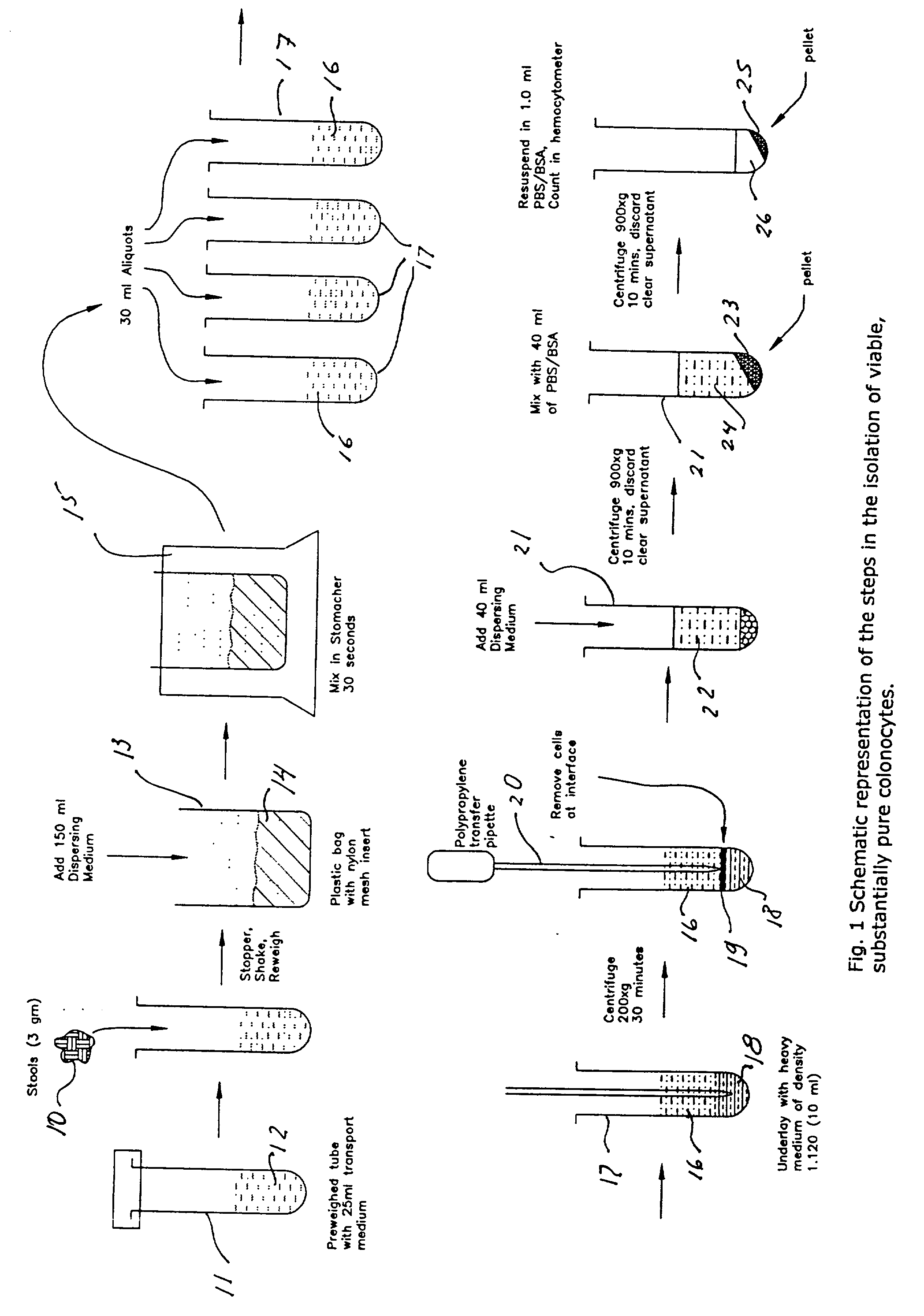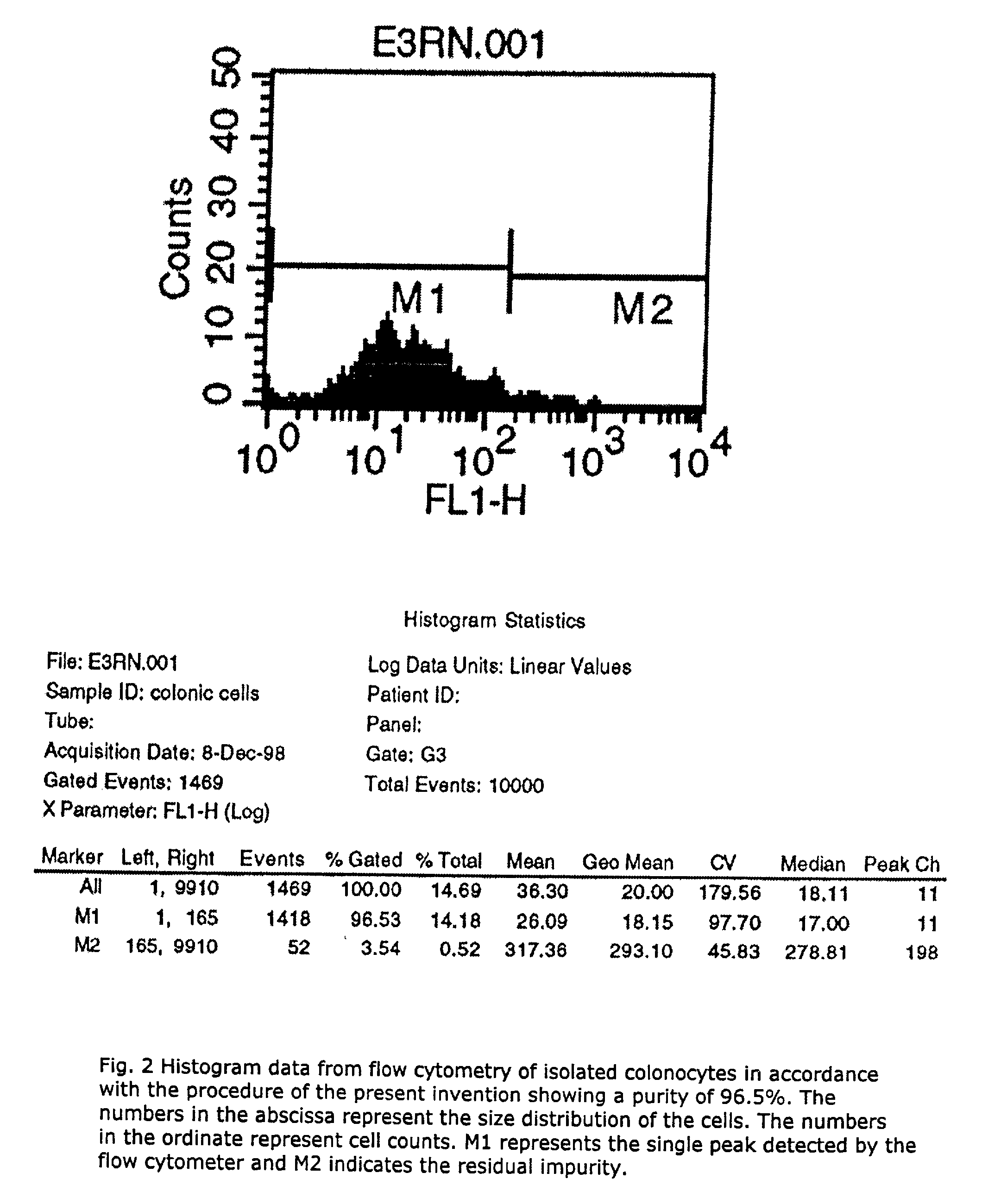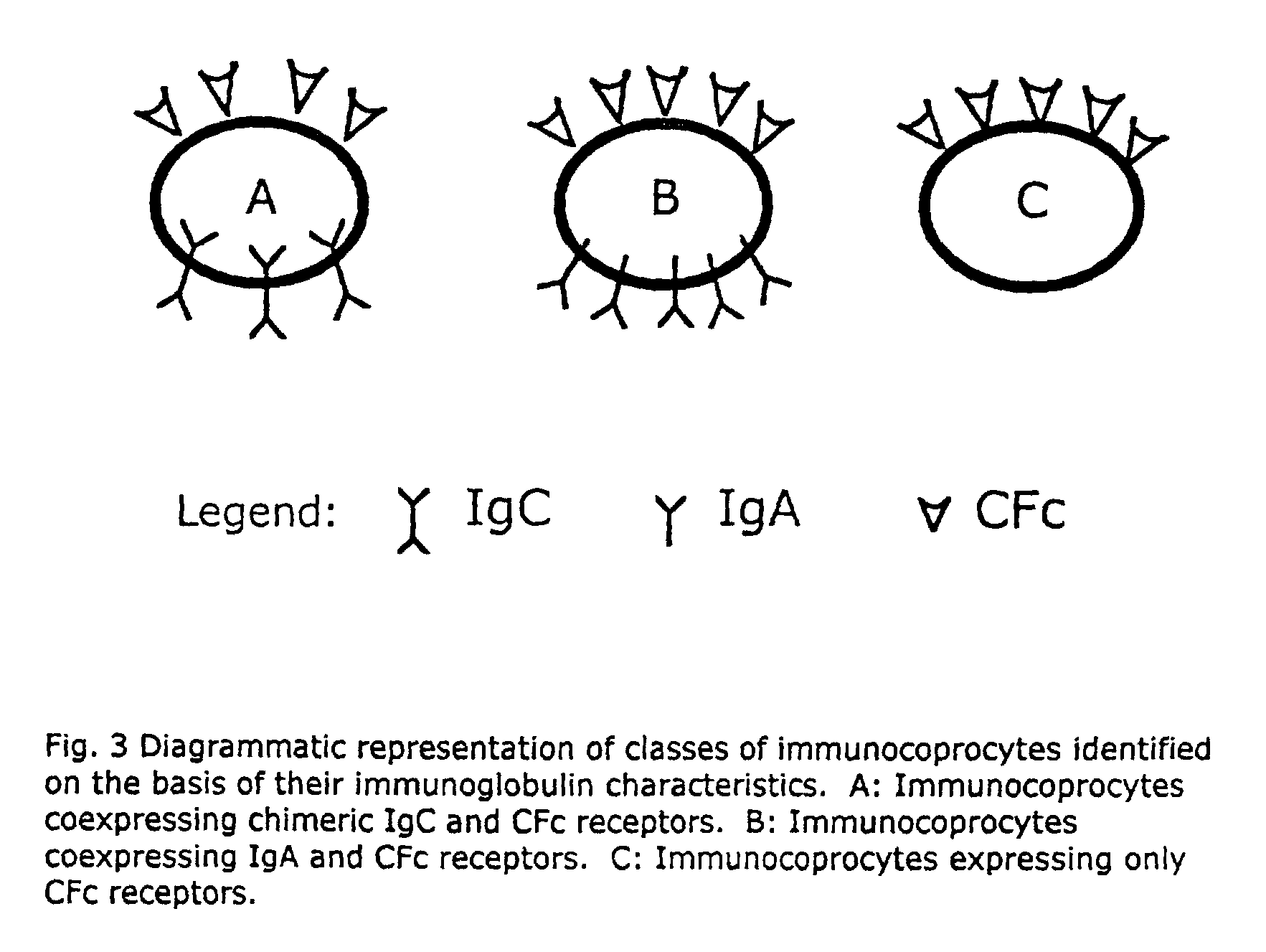Noninvasive detection of colorectal cancer and other gastrointestinal pathology
a colorectal cancer and non-invasive technology, applied in the field of isolated colonocytes, can solve the problems of reducing the specificity and sensitivity of other procedures, affecting the survival rate of patients,
- Summary
- Abstract
- Description
- Claims
- Application Information
AI Technical Summary
Benefits of technology
Problems solved by technology
Method used
Image
Examples
example-2
[0054] Assessment of status of mucosal immunity:
[0055] Cells are obtained as described above from subjects who are suspected of having an immunocompromised gut. Aliquots of cells (about 110K) are suspended in PBS buffer and incubated at 37.degree. C. for about 45 minutes with one of the following combinations of fluorescently labelled antibodies: anti-IgG FITC (green), anti-IgA PE (red), and anti-IgC FITC+anti-IgA PE. A parallel tube containing cells with an isotype control antibody is also maintained to account for non-specific binding antibody. Direct immunofluorescence assays are conducted to measure the binding of antibodies to different sets of colonic cells. A significant decrease in number of immunocoprocytes (expressing IgC) or IgA bearing cells is of diagnostic significance for immune deficiency. Table 2 lists values obtained for normal subjects. Any deviation from the normal values wound be indicative of immune dysfunction. It should be noted that direct and indirect immun...
example-3
[0056] Expression of colon cancer-associated biomarkers:
[0057] Cells are obtained as described above from patients suspected of having colon cancer or precursors of colon cancer (polyps). In one embodiment of this technique, cells are subjected to indirect immunofluorescence assay for the expression of CD44 or its molecular variants, e.g., CD44V3, CD44V6 and CD44V10; the presence of CD44 or its molecular variants being diagnostic of colon cancer.
example-4
[0058] As a source of somatic cells obtainable non-invasively, the colonocytes of the present invention are representative of the phenotype as well as genotype. Thus, they are useful in DNA typing and examination of biological macromolecules (such as DNA, RNA, protein and the like) for determining responses, for example, to pharmacologic and environmental agents and assessment of multi-drug resistance. These isolated cells are also useful in various other ways easily suggested to a skilled artisan.
[0059] It should be apparent that given the guidance, illustrations and examples provided herein, various alternate embodiments, modifications or manipulations of the present invention would be suggested to a skilled artisan and these are included within the spirit and purview of this application and scope of the appended claims.
2TABLE 1 Effect of storage on cell yields and viability Storage Time Cell Yield Viability (Hrs) Conditions % % 1-6 Ambient 100 85+ 10 Ambient 100 65 24 4.degree. C...
PUM
| Property | Measurement | Unit |
|---|---|---|
| temperature | aaaaa | aaaaa |
| temperature | aaaaa | aaaaa |
| temperature | aaaaa | aaaaa |
Abstract
Description
Claims
Application Information
 Login to View More
Login to View More - R&D
- Intellectual Property
- Life Sciences
- Materials
- Tech Scout
- Unparalleled Data Quality
- Higher Quality Content
- 60% Fewer Hallucinations
Browse by: Latest US Patents, China's latest patents, Technical Efficacy Thesaurus, Application Domain, Technology Topic, Popular Technical Reports.
© 2025 PatSnap. All rights reserved.Legal|Privacy policy|Modern Slavery Act Transparency Statement|Sitemap|About US| Contact US: help@patsnap.com



